How to Grow Oregano From Seed For Years of Reliable Harvest
Herb growing tipsOregano is a must-have herb in any garden, whether you have a small indoor herb garden or a larger outdoor one. This fragrant Mediterranean herb is easy to grow from seed, requires minimal maintenance, and even thrives in poor soil. In this article, we'll guide you through germinating oregano from seed to pruning and harvesting so you can enjoy this popular perennial herb for years to come. Growing oregano in your garden will ensure you never run out of fresh oregano.

Growing Oregano From Seed
Oregano seeds are tiny but grow into plants up to 1 foot tall and 2 feet wide. Although oregano is a perennial, it will die back in cold winters and come back in the spring. Oregano seeds can be started indoors 8 to 10 weeks before the last spring frost. They need light to germinate, so lightly cover the seeds with a growing medium. Keep the seeds moist and the soil temperature at 65º to 70º F for successful germination.
Once the seeds have sprouted, water oregano seedlings from the bottom to keep the soil moist and prevent damping off.

Oregano seed germination tips:
Start oregano seeds indoors 8 to 10 weeks before the last spring frost.
Barely cover oregano seeds as they need light to germinate. Gently press seeds into the soil. Oregano seeds need light to germinate.
Water by misting until the seeds start to sprout.
A dome can help retain moisture. Keep the dome on until the seeds begin to sprout.
Once the seedlings are growing, continue to keep the soil moist by watering from the bottom to keep the plants dry.
Thin out seedlings early on to make room for the largest and strongest of them to grow without competition.
How to Transplant Oregano Seedlings Outdoors
Once the oregano seedlings are several inches tall and there are at least four true leaves, you can start preparing your plants for transplanting.
Tender herb seedlings need time to adjust to outdoor conditions. Over the course of a week or two, harden off the plants by placing them outside. Start with just a few hours a day and gradually increase the exposure time—no need to rush. Take your time and make sure the weather is over 60ºF before transplanting.
Adding organic matter to your garden beds before transplanting can help supplement the additional nutrients your oregano plants need as they grow.
Plant in a location with full sun.
Plant seedlings at the same depth that they’ve been growing.
Space oregano plants 15” apart.

Maintaining Oregano Plants
Oregano is a perennial that will continue growing year after year. Over time new growth slows down, and the plant becomes more woody. Dividing oregano plants every few years will encourage new growth. Around five years, your oregano plant will need to be replaced.
In cold zones where it freezes, cut back the oregano plant after the first frost. Then cover the remaining plant with mulch to protect it during the winter. Once spring arrives, you can remove the extra layer of mulch to allow the oregano plant to grow.
Watering Oregano
Oregano is a Mediterranean herb and prefers soil more on the dry side. Usually, an inch a week is sufficient. Let the soil dry out between watering. Water when dry.
Fertilizing Oregano
Herbs like oregano don’t need extra fertilizer, and too much nitrogen can change its flavor. Average soil is where it will thrive.
Pruning Oregano
The best way to prune oregano is to pinch off tips as they grow. This will prevent it from blooming and going to seed. It will also encourage bushier growth.
Oregano as a companion plant
Oregano is a beneficial companion plant, especially when it is flowering. It attracts hoverflies that eat aphids and other pests. It also attracts parasitic wasps and pollinators like bees and butterflies.

Growing Oregano Indoors
Oregano grows well in containers and is a great fit for an indoor herb garden. There are a few things to keep in mind when growing oregano indoors:
You’ll need a sunny window location to grow oregano indoors. A south or southwest-facing window will usually give the 6 to 8 hours of daily sunlight needed. If you don’t have enough sunlight, use grow lights or cool fluorescent lights placed 6-15 inches away from your plants. And remember to rotate your plants occasionally so they get even exposure.
To increase indoor humidity in the winter, place oregano pots on a tray of pebbles with water.
Indoor oregano plants will benefit from being repotted every few years. When it’s time to repot an oregano plant, you can divide it and create several new plants.
Harvest and prune regularly to keep it from going to seed or getting leggy.
Additional oregano growing tips:
Herbs grow best in full sun. So choose a sunny spot when growing oregano outdoors.
If herbs are not harvested regularly, they will bolt or go to seed.
Prune or harvest the tops of herb plants for bushier side growth.
Oregano can spread, so plan and plant accordingly.
In early spring remove all the old dead growth to make room for new growth.

Solutions for pests and diseases
Oregano isn’t a target for pests. Like most plants, it can get aphids and spider mites. Check plants frequently, even indoor oregano plants.
Too much water will result in root rot and can lead to fungal diseases. Make sure the soil drains well and dries out between waterings.

Harvesting Oregano
Growing oregano in average soil will give you the best flavor. It will also be at its most flavorful right before it starts blooming. A pair of sharp kitchen shears is a helpful tool for herb harvesting and pruning.
You can harvest oregano any time after the plant is around 4 to 5 inches tall. Take a few leaves at a time, or cut off a whole sprig.
To dry oregano, cut off sprigs and hang them to dry. Once dried, the leaves can be stripped off and stored in an airtight container.
I love growing perennial herbs such as oregano because they are so hardy. In the spring I cut back the dead branches and the new growth quickly appears.
Growing oregano from seed is easy and can be grown in a variety of settings. Try planting this versatile herb and enjoy a delicious, reliable harvest for years to come.
Written by Beverly Laudie




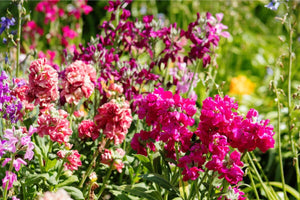
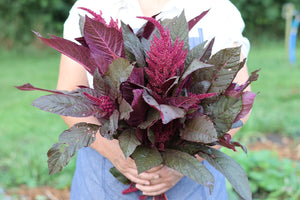
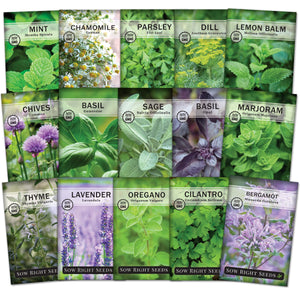
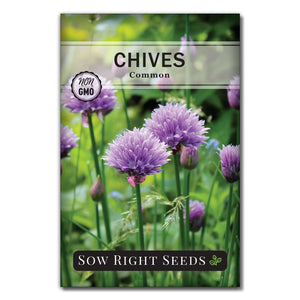
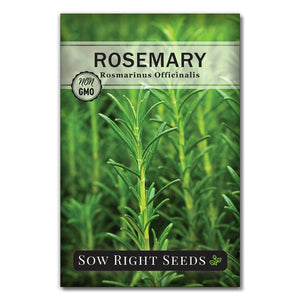
Abigail – That is so frustrating! From my experience, oregano needs warmth and light to germinate. I use a heat mat to keep the soil warm, a humidity dome to keep the soil moist, and a grow light just a few inches above the seeds. Try gently pressing the seeds into the soil without covering them or lightly cover them with vermiculite.
I have the oregano seeds from Sow Right, and I haven’t been about to get even one seed to germinate! I have tried to germinate them in water and in soil, and have used different kinds…not sure what the deal is?!
Patrick – Oregano is one of those herbs that can thrive in poor soil. I’d go ahead and plant it!
Thankyou. My herbs are in very poor soil.eg, Lemon Grass and it’s going gang busters. Can I plant Oregano in the same poor soil?
Leave a comment